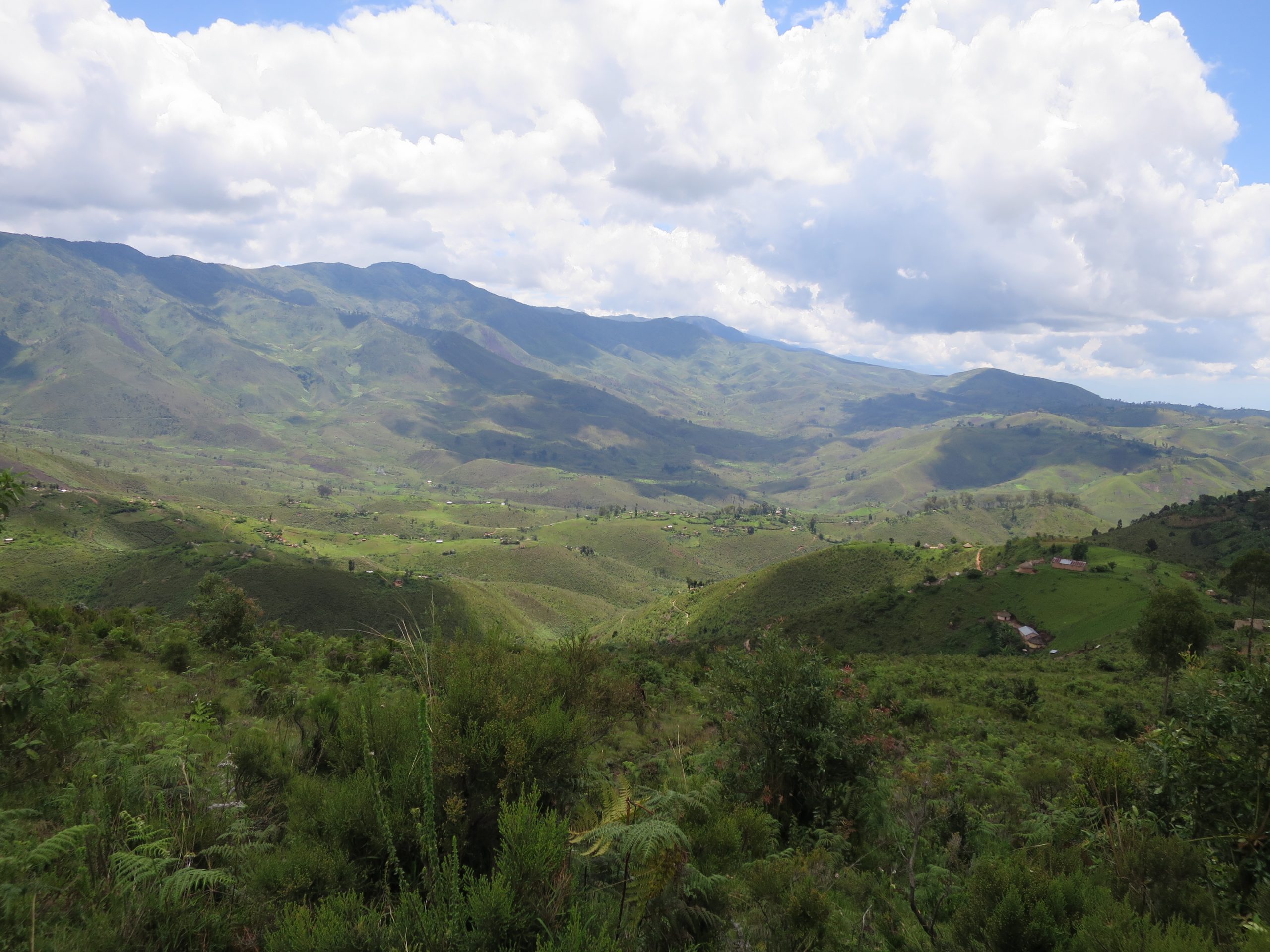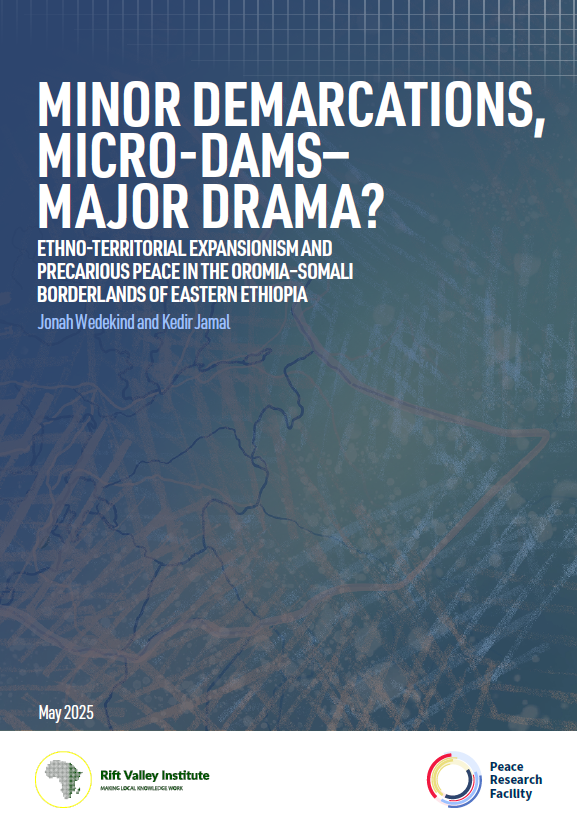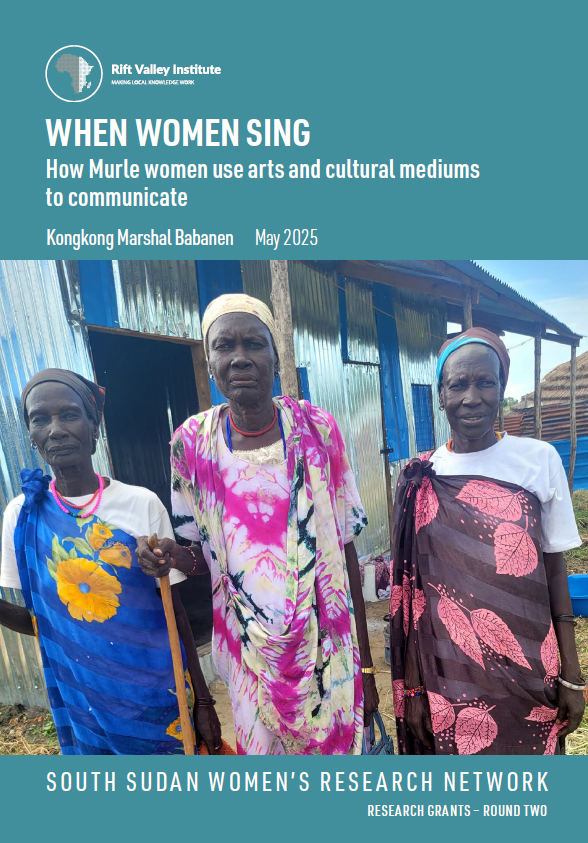This blog is the second part of a research project called ‘Navigating migration and the experiences of Congolese refugees in Nairobi’. The project’s aim is to better understand the drivers and dynamics of Congolese migration to Nairobi, and the lived experiences of migrants in Kenya’s capital, in light of the rapidly increasing levels of Congolese refugees in Kenya and, unlike for instance Somali refugees, their tendency to live in Nairobi as opposed to the refugee camps. Better understanding these realities can help contribute to a more sustainable, people-centred and comprehensive refugee response, especially considering donor countries’ aims for housing refugees in the region. The project was funded by the British Institute in Eastern Africa (BIEA) and fieldwork was carried out in September and October 2017. A total of 20 interviews were conducted, primarily with Congolese refugees and asylum seekers but also visa-holding migrants active in business and student politics, representatives from government and NGOs, and Kenyan residents. This blog was written by Connor Clerke.
In April 2017, a group of civil society leaders from the High Plateau in the eastern Congo signed an agreement to end the insecurity in their villages, one of many such agreements that have attempted to resolve the inter-community conflicts that have plagued the region for many years. Conflicts in this part of the Congo are fueled by a number of factors, including land, identity, authority and discourses of self-defence.[1] At the center of many of these conflicts has been the Banyamulenge—a small Tutsi community of predominately pastoralists living in the mountains above Uvira.[2] For decades, their position in the Congo has been contested and manipulated by political elites, leading to widespread violence, instability and displacement.

This inter-community animosity—particularly between the Banyamulenge, Babembe and Bafuliro—has fueled ongoing tensions in the eastern Congo and was reflected in interviews conducted with Congolese refugees in Nairobi. A 29-year-old man from Uvira explained that other Congolese ‘don’t take us [Banyamulenge] as citizens’. The Banyamulenge culture, he went on, ‘is very different from their culture’ but ‘we have no problems with others.’[3] Many others cited similar sentiments, derived from personal experiences as well as stories that circulate in small communities, made even smaller by their concentration in a neighbourhood outside of their country of origin. The same man explained that he has continued to feel threatened by other Congolese communities since his father and brother were killed in the 1990s. Others carry their fear from attacks by Mai Mai groups associated with the Babembe or Bafuliro communities to Nairobi. These long-standing grievances between communities in South Kivu do not stop at the Congo’s border but continue for many years in new contexts.
This blog is the second part of the Navigating migration and the experiences of Congolese refugees in Nairobi series and will explore the driving factors behind Congolese migration to Kenya, the demographics of those leaving the DRC and what is drawing Congolese migrants to Kenya.
Drivers of migration
Information is central to people’s decisions regarding migration and is important in understanding how and why people move. Although many respondents have not been in contact with family and friends who remained in the DRC, a regular circulation of information between the DRC and Kenya, as well as within networks in Kenya, keeps them informed. While sitting with Patrick in his flat he received a series of messages on Whatsapp with images of victims of a wave of violence in South Kivu that had occurred in September. For many, the regular updates and ongoing insecurity in the DRC reaffirm their decision to have left and, more practically, their inability to return. A businessman from Bijombo fled with his wife after their village was burned by a Mai Mai group in 2016. For many respondents, their assets were in their homes and livestock and therefore, even when security returns, beginning anew would be difficult.
While the regular updates on the situation in the DRC inform their decision not to return to the Congo, the initial motivation to leave is often much more direct. Two sisters, originally from Rurambo, left the DRC after having witnessed their father being killed and said, as a result, they could never return. In another case, a 63-year-old woman, also from Rurambo, described an attack by a Mai Mai group in 2016. ‘Everyone was running, they were killing your parents, husband, child.’[4] She lost her husband and one child, as well as property and cattle, before travelling alone to Nairobi, where she now lives with her son’s family who arrived in 2014. A young man from Rubemba recounted that ‘during war, people separated, children came together but parents went to [a] different area’, in reference to he and his siblings who came together to Nairobi in 2016. His parents are still in the Congo.[5] ‘I would go back to find [my] parents if there is peace’, another woman said, who fled from Bubembe in 2015.[6]
Those who identified as a refugee or asylum seeker said insecurity and war were the primary drivers for leaving the Congo. Although a few came from South Kivu’s second largest city, Uvira, the majority came from the rural areas west of the city. By contrast, those from larger urban centers, such as Bukavu, Goma and Kinshasa, were often in a much different position, legally and economically. While most had not fled the Congo—such as those pursuing education or business opportunities—others had left because of insecurity yet their ability to resettle with a sense of security is determined by their financial position. A businessman from Kinshasa was able to get a work permit and transfer his business to Nairobi because getting the right papers is ‘not difficult if you have capital’.[7] As Patrick and others explained, being eligible for a work permit is still not sufficient to actually obtain the permit. Having lost everything in the DRC, for refugees and asylum seekers just getting by in Kenya becomes almost impossible. But, as one respondent described, ‘In DRC, [there is] no peace but here, a little bit.’[8]
The journey to Nairobi
In line with the upsurge in violence in the eastern Congo, the majority of respondents arrived in Nairobi after 2014. The UNHCR recorded a 43 per cent increase in Congolese refugees and asylum seekers between 2014 and 2015 and a 19 per cent increase between 2015 and 2016.[9] A Kenyan resident explained that Congolese began arriving in Umoja—a neighbourhood in the Eastlands of Nairobi—about five years ago. He was not sure what the initial draw was but suggested that once a small group arrives, their friends and family will follow. This trend, facilitated by networks based on family, friends and ethnicity, can lower the cost of migration, allow longer distance movement and help recreate a community in exile.[10]
 This was the case with the people I spoke to in Umoja. Approximately two-thirds knew someone in Kenya prior to arrival while the majority of those knew someone in Umoja specifically. Once again, information networks demonstrably play an important role in how the decision to migrate manifests.
This was the case with the people I spoke to in Umoja. Approximately two-thirds knew someone in Kenya prior to arrival while the majority of those knew someone in Umoja specifically. Once again, information networks demonstrably play an important role in how the decision to migrate manifests.
These networks also influence the routes taken. Those who knew someone in Kenya generally travelled directly to Nairobi by bus, via Rwanda and Uganda. Others, such as Patrick, spent time in refugee camps or in other countries prior to going to Nairobi.
Patrick’s family fled the DRC in 2002 when he was only 3 years old and have been in Kiziba refugee camp in Rwanda ever since. Patrick described life in the camp as tough: ‘Children go to school, parents sleep in the morning, evening … in the camp there are problems.’[11] Recently, approximately 3,000 residents of the camp protested at the UNHCR office following a reduction in food rations due to funding shortages. Fifteen refugees were arrested and five killed in subsequent confrontations with the Rwandan police.[12] After 12 years in the camp, Patrick decided to go to Nairobi, where his uncle had settled after some time in Uganda. He took the two-day bus journey alone via Uganda to Nairobi. His brother followed him shortly after and continues to travel back and forth between Kenya and Rwanda. Porous borders in the region facilitate the free movement for those wishing to travel undetected, while in Uganda, refugees are issued a travel document allowing them to move within and outside the country.
In a similar case, a young woman from Kajembwe spent thirteen years in Nyabiheke refugee camp in Rwanda before going to Nairobi to ‘find my life.’[13] Another woman spent two years in Kampala before moving to Nairobi with her four children while a young man from Uvira worked briefly in South Africa before claiming asylum in Kenya because ‘[I] can’t do anything in my country.’[14] In each of these cases, the decision to go to Kenya was preceded by a family member or friend arriving there first.
In terms of demographics, the respondents were mixed. Of those who travelled alone, ages ranged from 15 to 62, while women and men, and those travelling alone and with others, were split evenly. However, women were more likely to travel with children—in many cases the result of their husband having been killed—whereas other groups travelling together consisted of siblings or spouses. The consequence is that the burden of caring for multiple children in Nairobi falls primarily on women.
Expectations of Nairobi
The majority of Congolese refugees from the eastern Congo do not go to Kenya, however, the increasing number who do raises questions, considering the distance and the language barrier—many respondents could not speak English or Swahili.

The primary expectation for the Congolese refugees and asylum seekers interviewed was that Kenya was the country from which to be resettled abroad. This perception is backed by UNHCR statistics. Since 2011, 56 per cent of Congolese applicants for resettlement have been resettled abroad from Uganda, while the number in Kenya is 70 per cent.[15] This may be a result of Uganda’s more favorable refugee policy, making local integration easier than in Kenya, or its proximity to the DRC, making repatriation easier should the conditions that forced refugees out of the Congo change. This is supported by Ugandan and Kenyan citizen’s perceptions of refugee integration, whereby the former are more likely to support refugees’ right to work (72 versus 55 per cent) and refugees becoming citizens (44 versus 31 per cent).[16] For those fleeing direct persecution—and with their eyes set upon resettlement—moving beyond Uganda to Kenya can be seen as creating an additional security barrier. When speaking with Patrick and his friend one day, Patrick laughed when I asked where his friend wanted to go in the future. He said, ‘All Congolese want to go to America.’[17]
After making the decision to try to be resettled abroad, it is also perceived that Kenya can offer relative peace in the interim. A woman from Uvira spent two years as a refugee in Kampala before going to Nairobi because of insecurity and violence in Uganda.
Once again, information networks play an important role in determining someone’s plan for migration. Patrick explained that all Congolese are registered with the UNHCR, the first step in a long process to resettlement. Moreover, many of the respondents know of someone who has been resettled abroad and through pictures, stories and remittances, networks link the High Plateau of the eastern Congo through the refugee camps in Rwanda to Nairobi and abroad to Canada, the United States and elsewhere, influencing the decision to migrate and expectations for arrival somewhere deemed to be at peace.
The refugees and asylum seekers interviewed are not economic migrants. Most came from a rural background and had left the DRC because of insecurity rather than a lack of livelihood opportunities. As Part 3 in this series will explore, besides the relative peace that Kenya offers, life is extremely difficult for Congolese refugees who struggle to survive in a foreign country with little support beyond their immediate communities and at the discretion of a bureaucratic system that severely limits their ability to make ends meet. As a father of five from Rurambo described, ‘In Congo, children drink milk but here there is no milk.’[18]
Notes
[1] See: Judith Verweijen and Koen Vlassenroot, ‘Armed mobilization and the nexus of territory, identity and authority: the contested territorial aspirations of the Banyamulenge in eastern DR Congo’, Journal of Contemporary African Studies 33/2 (2015): 191-212; Judith Verweijen, ‘From Autochthony to Violence?: Discursive and Coercive Social Practices of the Mai-Mai in Fizi, Eastern DR Congo’, African Studies Review 58/2 (2015): 157-180.
[2] For more on the Banyamulenge and South Kivu, see: Jason Stearns et al., Banyamulenge: Insurgency and exclusion in the mountains of South Kivu, Rift Valley Institute: London, 2013 and Koen Vlassenroot, South Kivu: Identity, territory, and power in the eastern Congo, London: Rift Valley Institute, 2013.
[3] Interview, 24 September 2017.
[4] Interview, 1 October 2017.
[5] Interview, 27 September 2017.
[6] Interview, 1 October 2017.
[7] Interview, 22 September 2017.
[8] Interview, 24 September 2017.
[9] UNHCR, ‘Statistical summary as of 31-Dec-17: Refugees and Asylum Seekers in Kenya’, Accessed 6 March 2018, http://www.unhcr.org/ke/wp-content/uploads/sites/2/2018/01/Kenya-statistics-package-December-2017.pdf
[10] See for example: David Mckenzie and Hillel Rapoport, ‘Network effects and the dynamics of migration and inequality: theory and evidence from Mexico’, Journal of Development Economics 84/1 (2007): pp. 1-24; Peder J. Pedersen, Mariola Pytlikova and Nina Smith, ‘Selection or Network Effects? Migration Flows into 27 OECD Countries, 1990-2000, IZA Discussion Paper No. 1104 (2004); and Christopher McDowell, A Tamil Asylum Diaspora: Sri Lankan Migration, Settlement and Politics in Switzerland, Providence, R.I., Oxford: Berghahn Books, 1996.
[11] Interview, 23 September 2017.
[12] See: Clement Uwiringiyimana, ‘Five refugees killed, 20 injured, in Rwanda camp food protest: police’, Reuters, 23 February 2018. Accessed 6 March 2018, https://www.reuters.com/article/us-rwanda-congo-refugees/five-refugees-killed-20-injured-in-rwanda-camp-food-protest-police-idUSKCN1G70FT; eNCA, ‘Congolese refugees camp at UN refugee office in Rwanda, protest food cuts’, eNCA, 21 February 2018. Accessed 6 March 2018, https://www.enca.com/africa/congolese-refugees-camp-at-un-refugee-office-in-rwanda-protest-food-cuts.
[13] Interview, 1 October 2017.
[14] Interview, 24 September 2017.
[15] UNHCR, ‘Statistical summary as of 31-Dec-17: Refugees and Asylum Seekers in Kenya’, Accessed 6 March 2018, http://www.unhcr.org/ke/wp-content/uploads/sites/2/2018/01/Kenya-statistics-package-December-2017.pdf; UNHCR, ‘Statistical summary as of 31 October 2017: Refugees and Asylum Seekers in Uganda’, Accessed 6 march 2018, https://ugandarefugees.org/wp-content/uploads/October-2017-Statistics-package.pdf
[16] International Rescue Committee, ‘Kenya: Citizens’ Perceptions on Refugees’, 19 June 2018 and International Rescue Committee, ‘Uganda: Citizens’ Perceptions on Refugees’, 19 June 2018.
[17] Interview, 27 September 2017.
[18] Interview, 27 September 2017.


